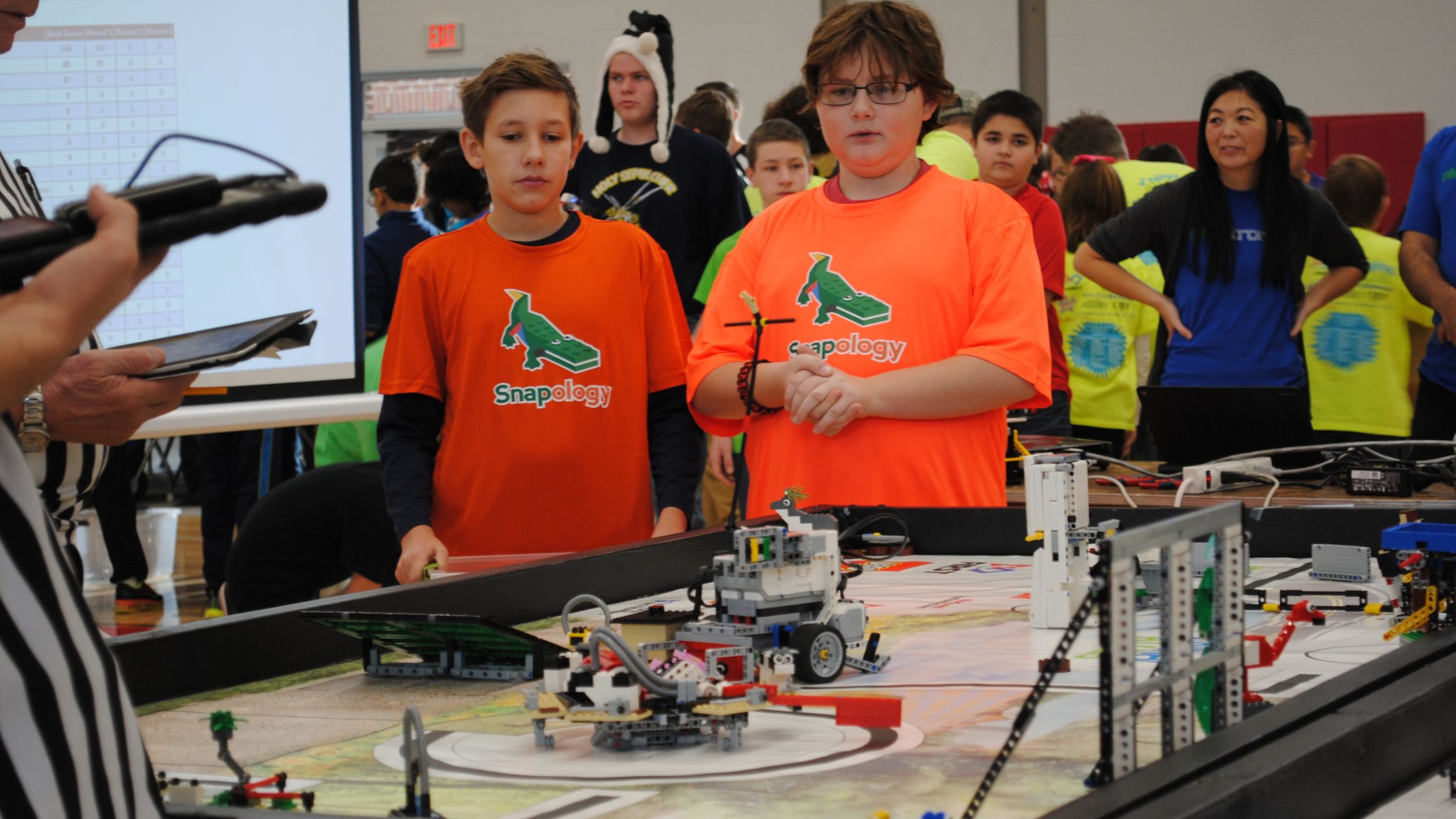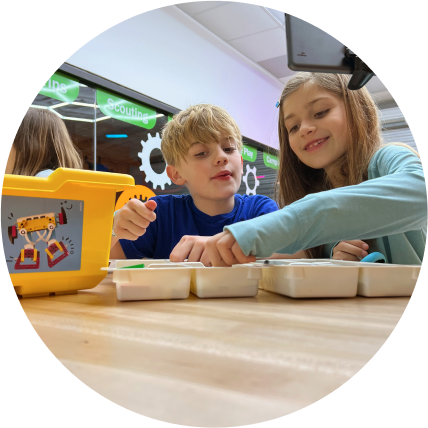There’s something beautiful about the thrill of a competition: the tension in the air, the potential for success or failure, that feeling in your stomach of utter excitement and downright terror. It’s a moment meant for testing yourself, and pushing yourself farther than you thought you could go. Sports, of course, are great examples of the thrill of a competition, but academic competitions are extremely gratifying too. Getting to use your intellect and ingenuity to solve challenging problems with your peers are intense, and thrilling. That’s why Snapology hosts a series of robotics competitions to foster that creativity in your child. These are great ways to activate your child’s natural curiosity, and we’ll tell all about how great they are for inspiring your kids with real STEM challenges.
Why Competitions Are Great
- Build Creative Problem Solving Skills
- Foster Collaboration
- Develop Interest In STEM Fields
Think About Challenges In New Ways
In order to overcome complex problems, your kids will have to think outside the box
The world we live in today is increasingly complicated, and that’s a good thing. We have access to more information than we ever thought possible with the creation of the internet, scientific progress is increasing at a pact faster than in all of history, and people across the globe can talk to each other in an instant. It’s truly an amazing world, and in order to capitalize on all of this innovation, your child is going to need the creative thinking skills that will allow them to traverse this new landscape confidently and securely. Children who aren’t taught problem solving skills usually don’t put effort into solving their problems, but rather avoiding problems, and providing a framework for problem solving through real-world applications can be a vital way of teaching an essential skill. By setting up a controlled environment for children to engage in challenges that force them to use different strengths, they’ll learn to draw on a variety of skills to solve tasks in creative ways. They’ll be able to think of past problems similar to the ones they’re presented with at the competition, and apply solutions that use their reasoning and logic to increase their chances of success. But one of the best parts of a competition isn’t winning: sometimes it’s more important to learn how to fail. Dr. Sam Collins, a hugely successful global leader on women as entrepreneurs and in positions of power, believes that failing is a necessary consequence of taking risks and living active lives. Without failing, we only stick to what society tells us works, or doesn’t work, and nothing can innovate. So even if your child doesn’t win the gold ribbon, there’s a valuable lesson to be learned, and one day they may look back on their hard work that day with pride.
Working Together To Be Better
When minds are working on overdrive to think for creative solutions, it’s crucial to know how to communicate your ideas
It’s the big day, and everyone on the team has an idea for how to solve the big problem. Depending on how good everyone is at communicating and collaborating, the group could pull together and use all of their ideas to approach the problem as a collective, or fall apart with bickering and malice. Learning how to work in a team is a notoriously difficult task, even for adults, except instead of teamwork we call it conflict management. But whether you’re 13 or 30, the fact remains that in order to succeed, we need to be able to talk to each other diplomatically. That’s why a robotics competition is so great: it provides a great setting for your child to practice effective communication in a high-pressure environment. As we all know, with limited resources we all need to compromise at one point in time, and your child needs to know when to submit to the will of the group, and when to defend their idea because they know it’s right. Sometimes, we aren’t able to work it out all by ourselves, which is why Snapology has adults on hand for defusing any tense situations and leading the kids into figuring out how they want to proceed while neutralizing any hard feelings. With all of this conversation and problem solving going on, your child won’t even know that they’re developing a love for all things STEM.
Plant The Seed of STEM
Snapology programs are so much fun, your kid won’t even realize they’re learning
With classrooms being notoriously dull due to their rote practice and memorization, Snapology decided to take learning into their own hands; or rather, into your child’s hands. Snapology advocates for a hands-on learning approach that uses real problems, like a competition where you must build a robot to complete a task, to foster a love and appreciation for the ways that STEM fields can improve the world we live in. By actually solving a real problem, not just an abstract equation, your child will experience the thrill of having their work pay off, or the frustration of seeing their idea not fulfill its purpose, and both experiences are crucial to their development. One thing’s for certain though: once your child gets a taste for all that STEM has to offer, they can develop a passion that will last them a lifetime. Granted, STEM fields aren’t for everybody, and it might turn out to be that your child would rather pursue a life of artistic pursuits, or is better suited to an entrepreneurial path, or politics. Even if that is the case, letting your child try out a competition like this will cement their feelings towards it, and teach them other valuable lessons, like creative problem solving and effective communication, along the way.
Play-based robotics competitions are more than a simple kids activity: they offer a portal into the amazing and wonderful world of STEM innovation, and offer a chance to develop skills that will be useful forever. If you think your child would be interested in testing their knowledge to achieve things they can be proud of, find a competition near you through Snapology, and let your kid achieve something amazing.
€
For more information about enrolling your child visit Snapology.com


